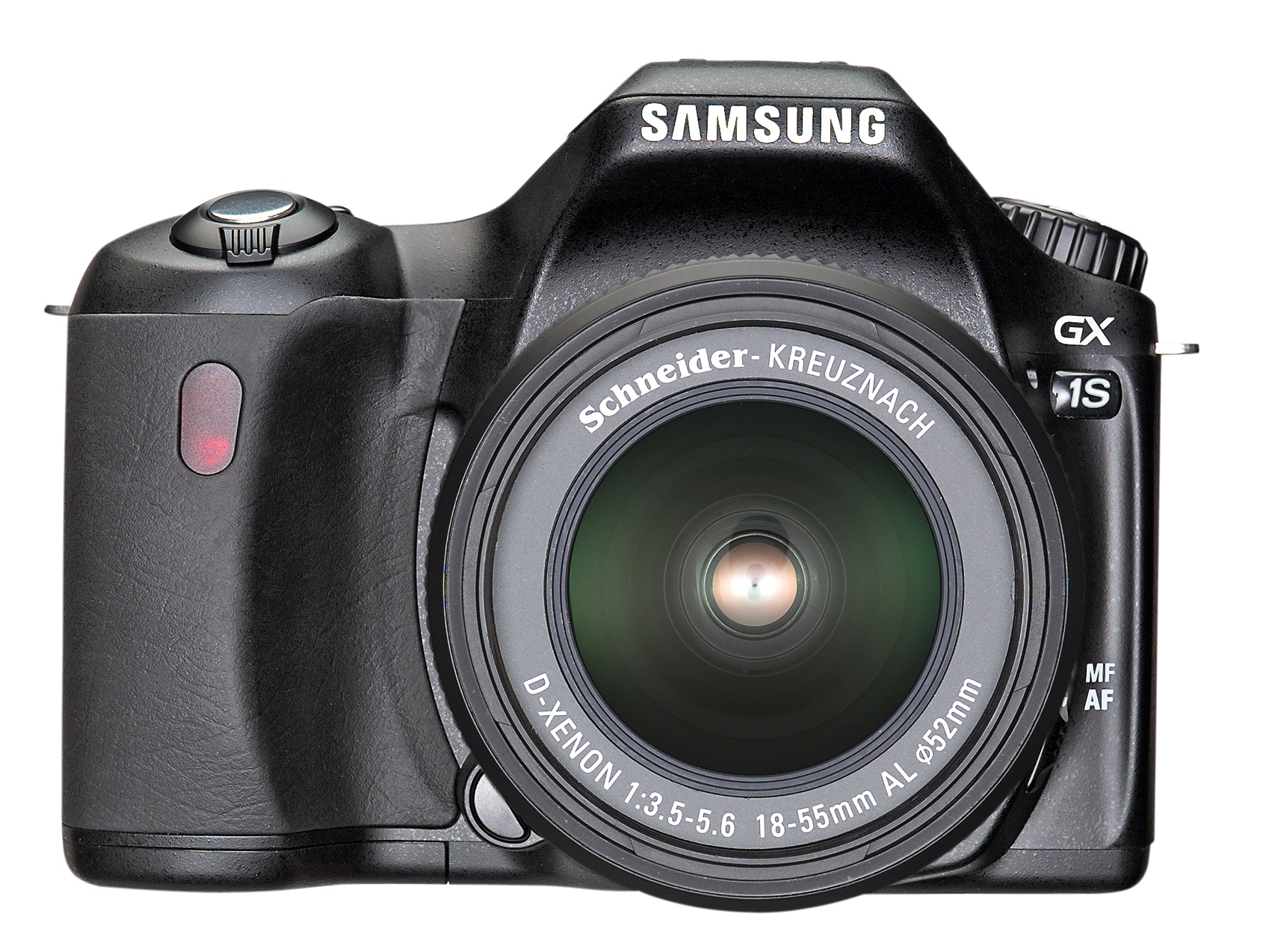TechRadar Verdict
The GX-1S is a cheap SLR option, but there's still better value to be had out there
Pros
- +
Smooth, reliable manual zooming and focusing
Generous 2.5-inch screen
Tough build
Good image quality
Cons
- -
Controls are not too impressive
Some optical distortion and chromatic fringing
Why you can trust TechRadar
Koreans can buy Renault-Samsung cars, cover them with Samsung insurance, fill them with Samsung-refined petrol and take a trip to the Samsung Everland amusement park. Seriously. But up until now, you couldn't buy a Samsung digital SLR.
And to be honest you still can't, as the corporate giant's first step away from compact cameras is actually a Pentax *ist DS with a Samsung badge and lens cap hastily added.
That's not to say the GX-1S is a complete clone. The Pentax's two-tone retro housing has been replaced by a smart all-black case that recalls Samsung's genuinely home-grown prosumer effort: the 8Mp, 15x zoom DigiMax Pro815.
The GX-1S feels tough all round, from its chunky right-hand grip to the firm zoom ring. The controls are less impressive, with individual buttons that are slightly too small to locate without taking your eye from the viewfinder, and there's a four-way control pad that feels spongy and slow.
Fast warm up
The Samsung is quick to warm up and fairly quick to focus, although it is prone to 'chatter' if it's not quite sure what it's locking on to. Also, there's no focus assist from the flash, which requires a manual deploy. Bundled with the camera is a Schneider-Kreuznach branded 18-55mm zoom, which seems identical to the lens supplied with the Pentax *ist DL.
Manual zooming and focusing are commendably smooth and reliable, but otherwise this isn't a tremendously impressive package. There's more optical distortion than we would like and we noticed some chromatic fringing, even at the relatively modest 84mm equivalent telephoto. However, the 'in-viewfinder' feedback is good.
Around the back of the GX-1S there's a generous 2.5-inch screen and not much else. Dedicated controls have been kept to a minimum, with a single Function button used to access key settings instead.
It's a boost for simplicity but it soon gets frustrating having to hit the Fn button, then the right button, then scroll and Enter simply to change the ISO sensitivity, for example. Happily the maximum ISO3200 is welcome, given the relatively low levels of noise it produces.
Photo features are skewed to the novice photographer. A host of scene modes can be accessed from the main mode dial and menus, plus the essential PASM modes. The jog dial works well, although it's annoying not to be able to easily tweak aperture or shutter speed when you're in Program mode.
The quoted 2.8fps continuous shooting mode is difficult to achieve - count on about half that as the 1S focuses between shots. This grinds down to under 1fps when the buffer fills up (a mere five frames). Processing and deletion times are sluggish, and it takes at least a second to call up images when switching to playback. However, turning off the histogram display speeds it up significantly.
Image quality is generally good although the colour reproduction is almost laughably pumped-up. Does a mainstream audience really want everyone glowing with red cheeks? Fortunately the real shades are in there somewhere, and you can always dial down the saturation. Skin tones look especially good, however, and default sharpness is nicely judged.
Fine detail is also well captured, to the limit of the cheap lens, at least. The multi-zone metering isn't as smart as you'll find on rivals, and after struggling with a few tricky scenes, we switched to using spot metering and the exposure lock more than we really wanted to.
Lack of Grrrr
The built-in flash could be more aggressive, and it struggles to reach the edges of wide-angle shots. There are no sophisticated rear-curtain modes or high-speed syncs on offer. Although no SD memory card is supplied, the GX-1S gains points for being able to use four standard AA cells.
The GX-1S arrives at a time of enormous change in the digital SLR market. Sony is picking at the leftovers of Konica Minolta while Panasonic, Olympus and Leica are cosying up together. Canon and Nikon might not have much to fear from the ageing, built-to-a-budget GX-1S, but unlike some of the specialist camera companies selling SLRs today, you can be certain that the giant Samsung brand is here to stay. Mark Harris
Tech.co.uk was the former name of TechRadar.com. Its staff were at the forefront of the digital publishing revolution, and spearheaded the move to bring consumer technology journalism to its natural home – online. Many of the current TechRadar staff started life a Tech.co.uk staff writer, covering everything from the emerging smartphone market to the evolving market of personal computers. Think of it as the building blocks of the TechRadar you love today.
